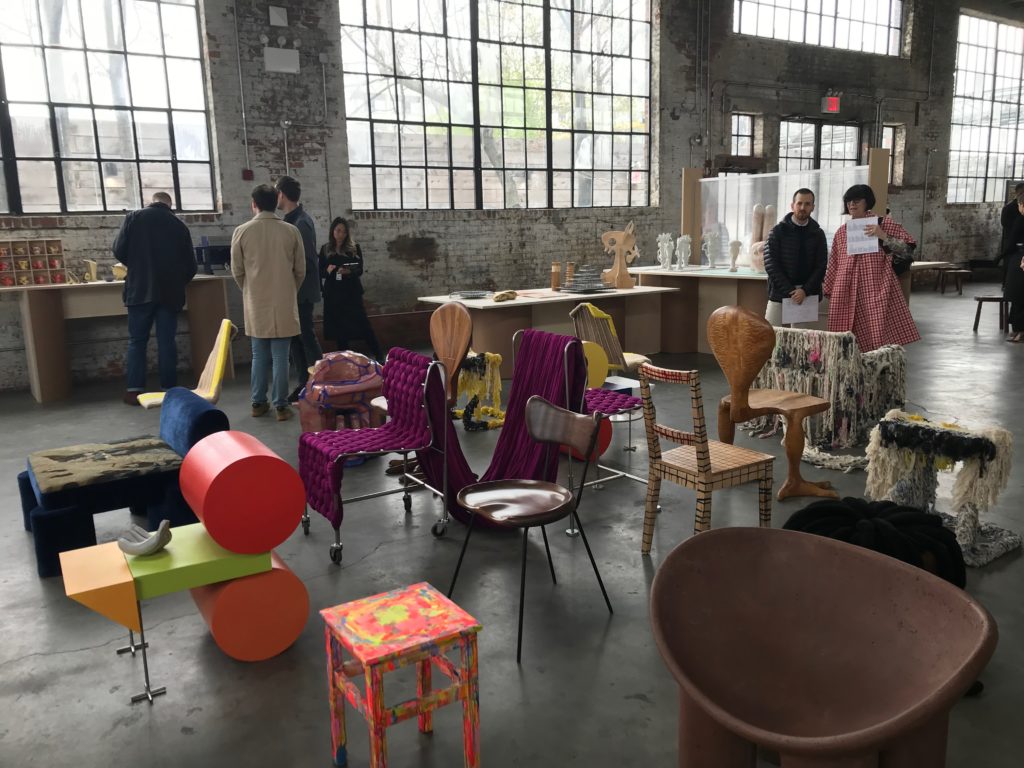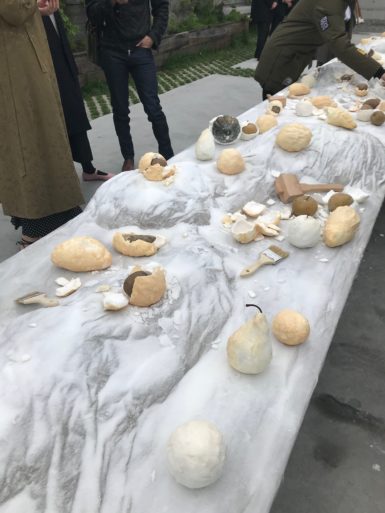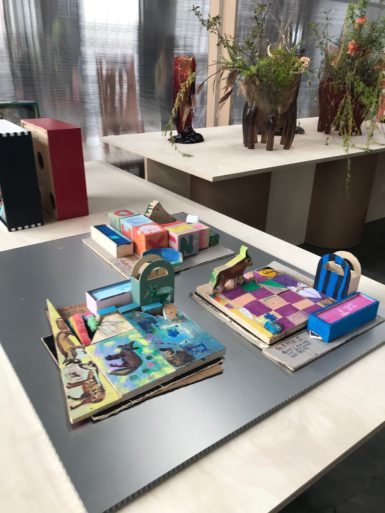[ad_1]

Installation view at Object & Thing.
CLAIRE SELVIN/ARTNEWS
Though Brooklyn’s streets were gray this morning, with overcast skies and a light drizzle of rain, the premiere of Object & Thing, a new fair in Bushwick, added a restorative pop of color to the scene. Founded by Abby Bangser, the former artistic director of Frieze Art Fairs for the Americas and Asia, the event aims to “break the boundary between art and design,” Bangser told ARTnews this morning, with an open layout hosting a single exhibition of multifarious ceramics, furniture wares, fiber pieces, and other intricate curiosities. Thirty-two galleries have consigned about 200 works for the affair, which runs through Sunday.
In a week packed with fairs where white walls silo galleries, dealers, and works of art from one another, Object & Thing presents a comparatively mellow and accessible experience. Prices for works, ranging from approximately $1,000 to $50,000, are listed on a printed flyer (and can also be viewed online). The objects are not grouped by gallery, artist, or medium, but rather organized thematically or based on material in an airy warehouse at 99 Scott Avenue, where the fashion brand Eckhaus Latta has staged shows.
Perhaps even more radical is the absence of dealers and gallery representatives all together. Sales are facilitated by Object & Thing staff, who are stationed, iPads in hand, around the 15 “islands” at which works are displayed.
Standing in the venue’s adjacent courtyard in sight of Laila Gohar’s Salt Relief, a long table atop which visitors could break the salt-encrusted exteriors of potatoes, apples, pears, and various gourds with wooden mallets, architect Rafael de Cárdenas, the fair’s artistic director, said that the format is meant to “suggest an almost residential feel.” The space is lit only by natural light seeping through its high windows, and the clusters of items have an idiosyncratic feel, exuding a tangible playfulness, without any wall text or signage.

Laila Gohar’s Salt Relief.
CLAIRE SELVIN/ARTNEWS
“I was reacting to visual dialogues among objects,” de Cárdenas said, adding that particularly bold pieces functioned as “good anchors to complement the things around them.”
Among the treasures to be found are two painted porcelain mugs—one in pink and purple hues, the other gleaming white—forged by Judy Chicago in 2010 and presented by Salon 94 and Jessica Silverman Gallery, of New York and San Francisco, respectively. The pieces, each priced at $25,000, depict human faces in raised relief on their sides. A nearby sales rep told me that she’d “been staring at them this whole time.”
More highlights include four sleek backgammon tables by Zak Kitnick that people were already using in the first hours of the fair. They’re $15,000 each. In a similar vein, handmade games by Susan Cianciolo are on view that feature vibrant assortments of colors and materials, like popsicle sticks, wood, cardboard, and styrofoam, though the rules of these pieces are a bit more opaque.
At the center of the fair is an arrangement of chairs—two with bird-like talons, a few with shaggy, loose fabric, and many more distinct types. Also in the way of furnishings is a bright yellow stool by Donald Judd, on sale for $6,080. One of the more expensive objects available is Christoph Büchel’s Hanging Shoes, contributed by Hauser & Wirth. That pair of the artist’s shoes, hung from a pipe, is priced at $30,000.

Susan Cianciolo’s handmade games.
CLAIRE SELVIN/ARTNEWS
Other offerings are less easily defined or categorized. There’s a bounty of biomorphic, undulating sculptures and vessels, a few of which contain unruly plants whose leaves extend in all directions. An especially peculiar piece, Adriano Costa’s Unicornia do Sul, involves wood, bronze, and a black backpack.
During our conversation, de Cárdenas said that he was guided by intuition and emotion in organizing the presentation, terming it a “visceral” process. The resulting arrangements impart a welcome sense of joy—and a welcome change of pace—to fairgoers in New York, who could be forgiven for feeling a bit weary after a busy week of art fairs.
[ad_2]
Source link

